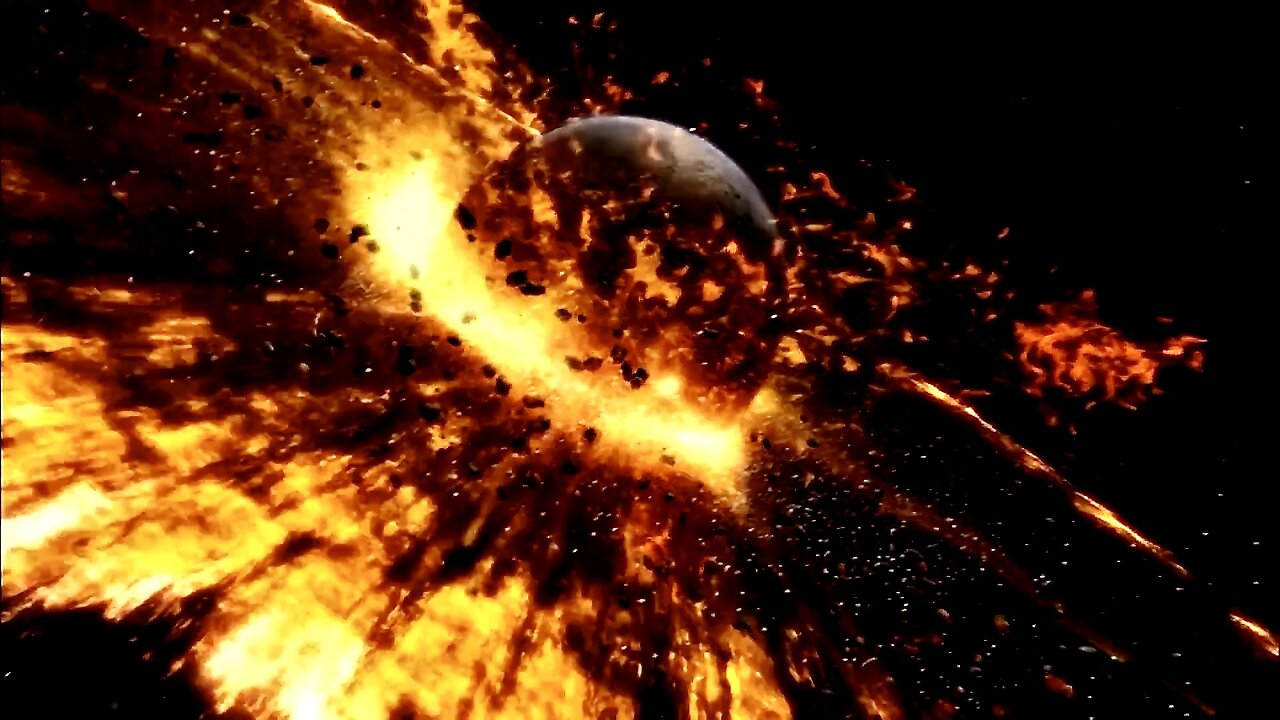Premium Only Content

History of Earth's Moon - Full Documentary
Get a great telescope on Amazon - https://amzn.to/4gkZI0N ...Since the dawn of civilization, we have always wondered where the Moon came from. But until we finally managed to visit it in 1969, its origins remained a complete mystery to science. Analysis of samples brought back from the NASA Apollo missions suggest that the Earth and Moon are a result of a giant impact between an early proto-planet and an astronomical body called Theia. Here are other Moon Origin Theories - There used to be a number of theories about how the Moon was made and it was one of the aims of the Apollo program to figure out how we got to have our Moon...
Prior to the Apollo mission research there were three theories about how the Moon formed. The evidence returned from these missions gave us today's most widely accepted theory.
Capture theory suggests that the Moon was a wandering body (like an asteroid) that formed elsewhere in the solar system and was captured by Earth's gravity as it passed nearby.
The accretion hypothesis proposes that the Moon was created along with Earth at its formation.
The fission theory suggests Earth had been spinning so fast that some material broke away and began to orbit the planet.
The giant-impact theory is most widely accepted today. This proposes that the Moon formed during a collision between the Earth and another small planet, about the size of the planet Mars. The debris from this impact collected in an orbit around Earth to form the Moon.
Proto-Earth and Theia -
Before Earth and the Moon, there were proto-Earth and Theia (a roughly Mars-sized planet).
The giant-impact model suggests that at some point in Earth's very early history, these two bodies collided.
During this massive collision, nearly all of Earth and Theia melted and reformed as one body, with a small part of the new mass spinning off to become the Moon as we know it.
Scientists have experimented with modelling the impact, changing the size of Theia to test what happens at different sizes and impact angles, trying to get the nearest possible match.
Scientists are now tending to gravitate towards the idea that early Earth and Theia were made of almost exactly the same materials to begin with, as they were within the same neighborhood as the solar system was forming. If the two bodies had come from the same place and were made of similar stuff to begin with, this would also explain how similar their composition is.
A balancing influence
Having a moon as large as ours is something that's unique in our solar system. While other planets have tiny moons, the Earth's Moon is almost the size of Mars. If you look at other similar planets to ours, they wobble quite a lot in their orbit (the North Pole moves) and as a result the climate is much more unpredictable.
The Moon has helped stabilize Earth's orbit and reduced polar motion. This has aided in producing our planet's relatively stable climate.
'It's a subject of quite a lot of scientific debate as to how important the Moon has been in making it possible for life to exist on Earth.'
Moon fact: The biggest moon-quakes Apollo astronauts ever recorded registered 5.5 on the Richter scale and lasted for over 10 minutes. As this is enough to damage buildings here on Earth, any future Moon base will need to be super-sturdy.
Scientists generally believe that the Moon consisted of molten magma in its very early history. Heavy metals sank to form the core. Then, as it cooled, crystals began to form within the magma. Denser minerals sank down to later form the mantle, whereas lighter minerals floated to the surface to form the crust. What is left today is a small solid iron-rich core surrounded by a layer of liquid magma. Enveloping the core is a thick solid mantle 1,350 kilometers deep that makes up most of the Moon’s volume. And wrapping the mantle is a roughly 50-kilometre-deep crust, which is on average even thicker than the Earth’s.
#prehistoric #science #space
-
 52:31
52:31
Knowledge Land
1 month agoMystery of the 3,000 Year Old Girl from Egtved Denmark - Life in the Bronze Age
781 -
 54:43
54:43
Kimberly Guilfoyle
7 hours agoThe Trump Effect: Mexico Folds, Live with Dinesh D’Souza & Chuck DeVore | Ep.193
65.6K30 -
 1:20:47
1:20:47
Redacted News
5 hours agoMexico CAVES to Trump over tariffs, USAID Shutdown, & Zelensky loses $200 billion | Redacted Live
143K379 -
 1:02:29
1:02:29
The StoneZONE with Roger Stone
2 hours agoIs GOP Sen. Bill Cassidy Playing Politics with RFK Jr. Vote as U.S. Faces Public Health Crisis?
3.88K2 -
 1:10:30
1:10:30
BIG NEM
5 hours ago📢 THE JOLLOF-OFF: The Battle for West African Cuisine! 🇳🇬🔥🇬🇭
1.92K4 -
 54:58
54:58
LFA TV
1 day agoThe Trade War Begins | TRUMPET DAILY 2.3.25 7pm
40.8K27 -
 11:08
11:08
Tundra Tactical
5 hours ago $0.44 earnedDead Air Silencers 10 YEARS of INNOVATION!
10.3K1 -
 1:20:32
1:20:32
The Amber May Show
1 day ago $2.98 earnedUSAID | Where Is All The Money Going | IRS Spying On Our Bank Accounts | Sam Anthony
42.2K18 -
 1:50:57
1:50:57
2 MIKES LIVE
4 hours ago2 MIKES LIVE #175 Deep Dive Monday!
16.8K2 -
 1:24:51
1:24:51
The Big Mig™
23 hours agoHow Transparency Will Kill The Deep State
20.3K3